The Article
AKUTRAK PHONO AMPLIFIER FROM THE FUNK FIRM
11th July 2024
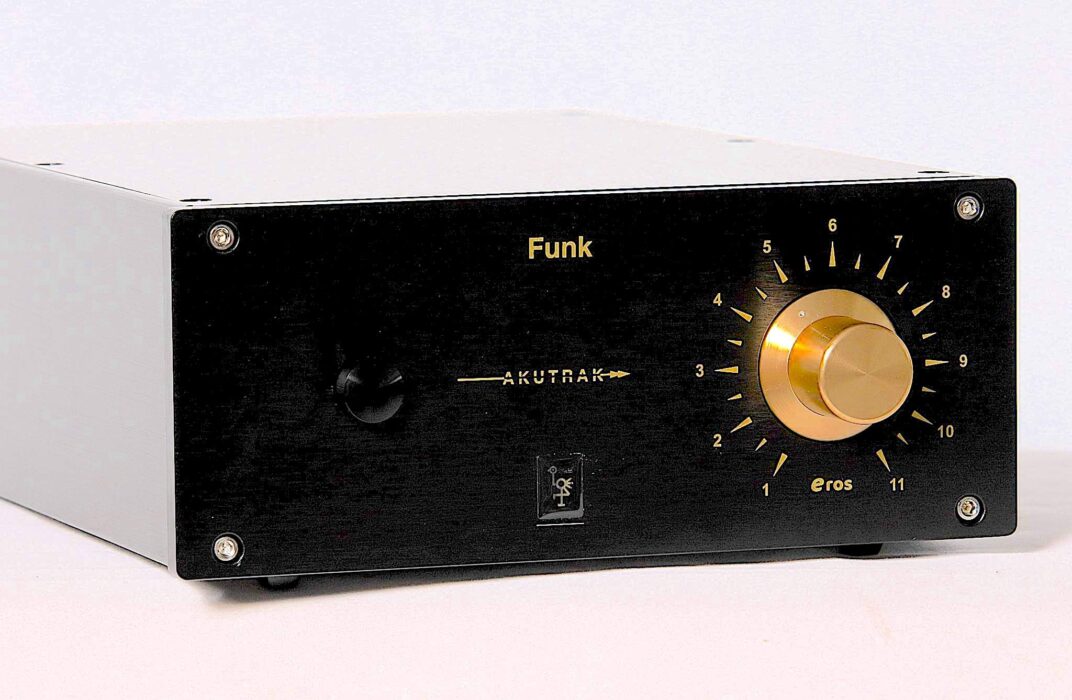
A moving-magnet, one-box phono amplifier at a healthy price? Paul Rigby just had to check this one out
Well. This is awkward.
Right about now, I would dive into the background technology of the phono amplifier itself, I would show images on the gubbins inside, I would talk about why this transformer was used and how the winding patterns change the noise floor, why this capacitor was preferred over that capacitor and how the internal design is organised to maximise isolation.
But you’re not getting any of that here. Why?
Because we’re dealing with boy genius Arthur Koubessarian, head honcho at The Funk Firm, that’s why. If you check out the dictionary meaning for maverick, you’ll find his name there in paragraph one, just under James Garner (that’s for any TV fans out there).

Actually, dealing with Arthur is always an enlightening experience. I tend to press the reset button on my expectations whenever I approach one of his products for review. I never know what’s going to happen.
So this time, Arthur told me that, if he started to talk about the tech in any detail at all, he would give the game away and he would lose a competitive edge and I can understand that.
That’s why there’s no internal imagery either. He just doesn’t want to make it easy for his competitors. Again, that’s fine with me. I respect his wishes on this one.
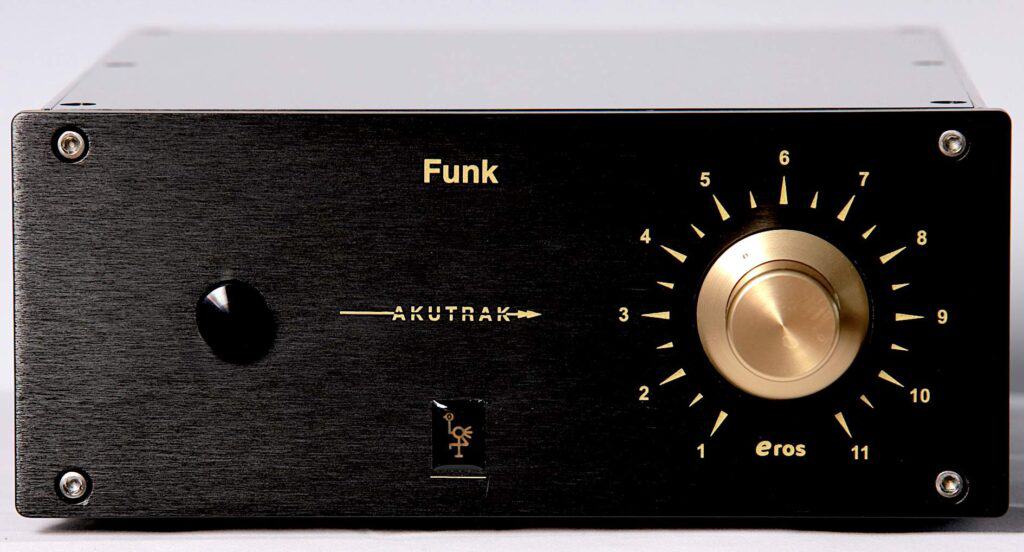
Well, for a start, this is a phono amplifier and it’s designed to handle moving magnet cartridges only. And its priced at £1,800. So it’s a serious piece of kit.
It’s also a one-box system. It looks very nice indeed in design terms. It offers the standard phono amp inputs and outputs on the rear plus a power socket. So, no surprises there.
On the front left is a push power button and, on the far right, is a clue as to the design philosophy of this thing. There are no DIP switches here. No toggle switches for loading and the like. What you see here is a rotary control. A volume knob, as it were, that changes the loading compensation, in effect.
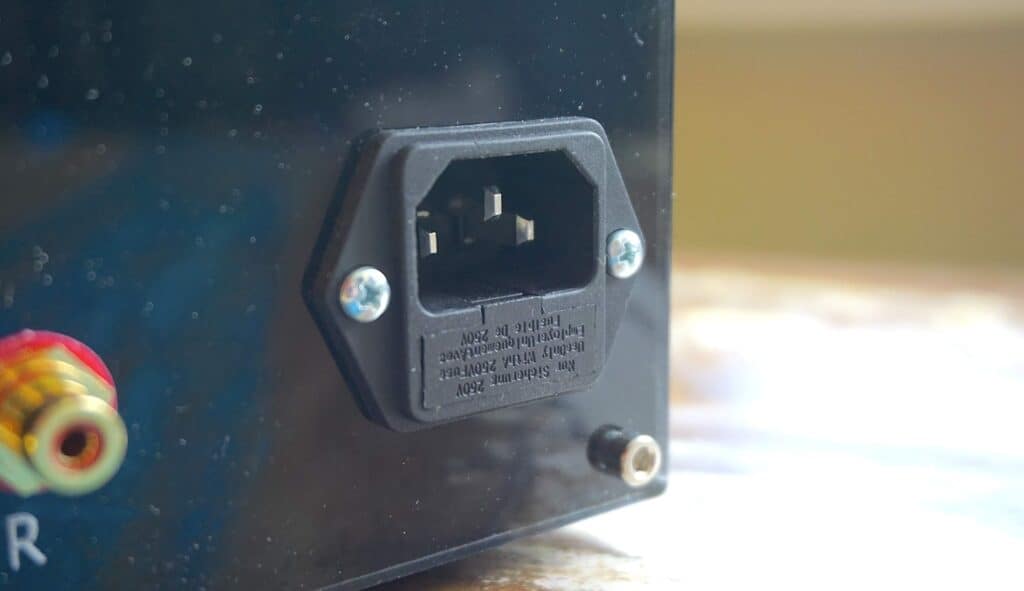
I don’t see this sort of thing very often. When I do though, I tend to gravitate towards them because rotary-driven phono amplifiers, in my experience, are the very best methods of tuning in a phono amplifier to your own personal system.
DIP switches and toggle switches that hit a pre-set figure? They offer approximates. They offer averages. They offer ball park settings. The rotary control enables your ear to slowly zero into the sweet spot. Why can’t every phono amplifier on the planet have a rotary knob on the front? And I reject the cost issue because a cheap phono amp could have a cheap rotary control and still perform better than a DIP switch monstrosity. Again, in my humble opinion.
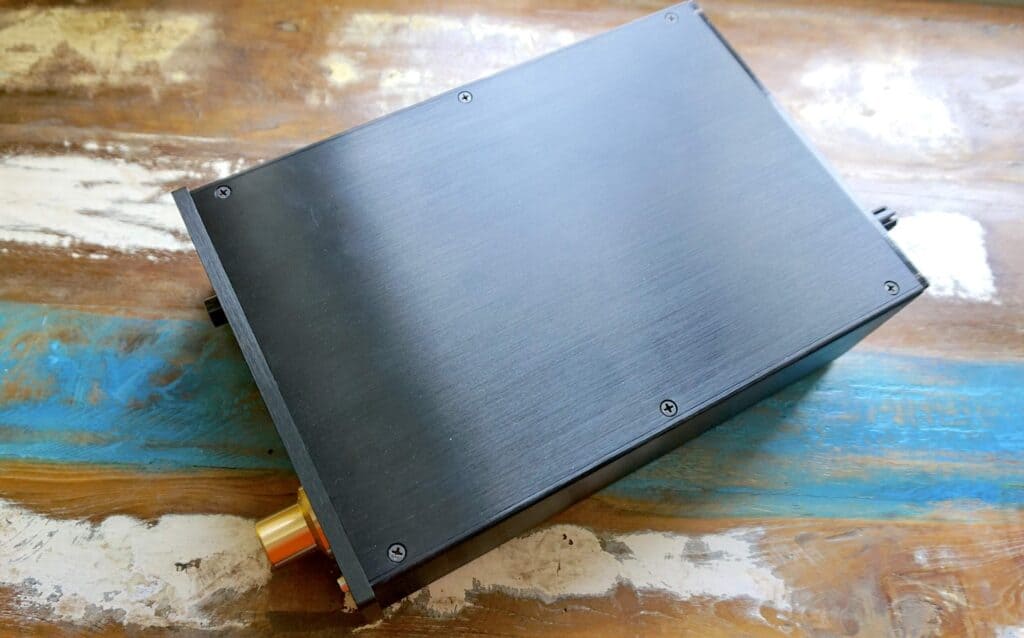
I have this very same option in my system via the valve-driven Icon Audio PS3 phono amplifier and that’s the system I’ll be using as a reference in this one. And while I’m on the subject? I’ll be using a Michell Technodec turntable as a source and a Goldring 1042 cartridge as my preferred cartridge for this test. I know both like the back of my hand so I’ll be able to track the performance of this Funk Firm box easily.
The point of this phono amplifier though is this. It is trying to take not only the cartridge but also the tonearm cable into consideration and it’s trying to produce a flat response for both of those in preparation for the RIAA EQ curve to do it’s thing. It’s a general approach that I’ve also seen from Graham Slee.
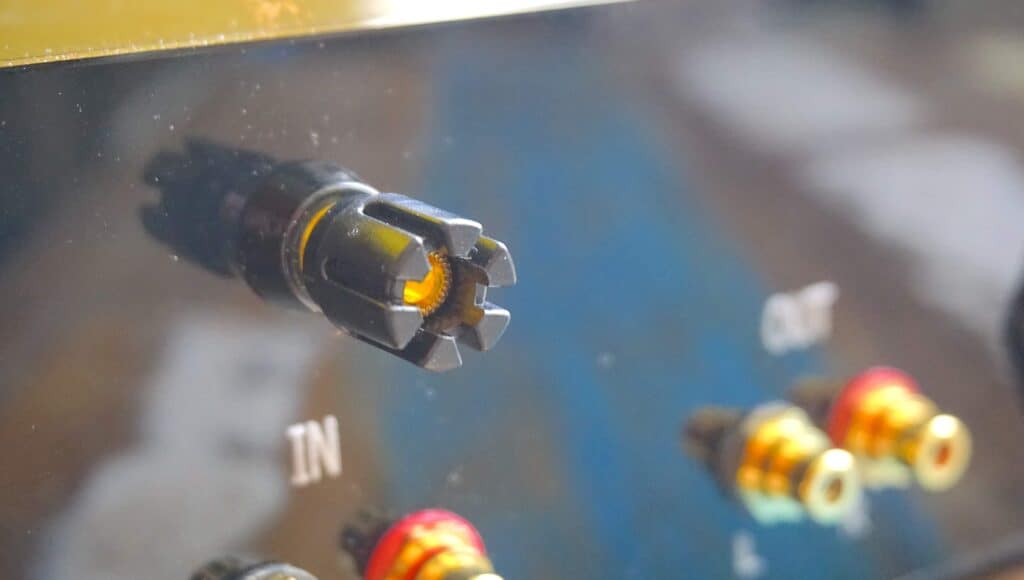
That is, if you don’t have a flat response before the RIAA curve turns up then that will only amplify any errors, making everything sound worse. So this phono amplifier’s entire purpose is to provide a level playing field, as it where, before the RIAA even kicks in.
SET UP
Before we get to the sound tests, a quick piece of advice on setting this one up. Anyone who knows me and this website, knows this. I trust my ears. Well, my brain. Everyone talks about ears listening to HiFi when, in fact, it’s your brain, the ears are only translators. Conduits.
Even so, as I say, I trust mine. But I also trust yours. We are all different. Our brains also hold personal emotive bias which is why a rotary load set up is perfect because the set up is bespoke to you and you alone.
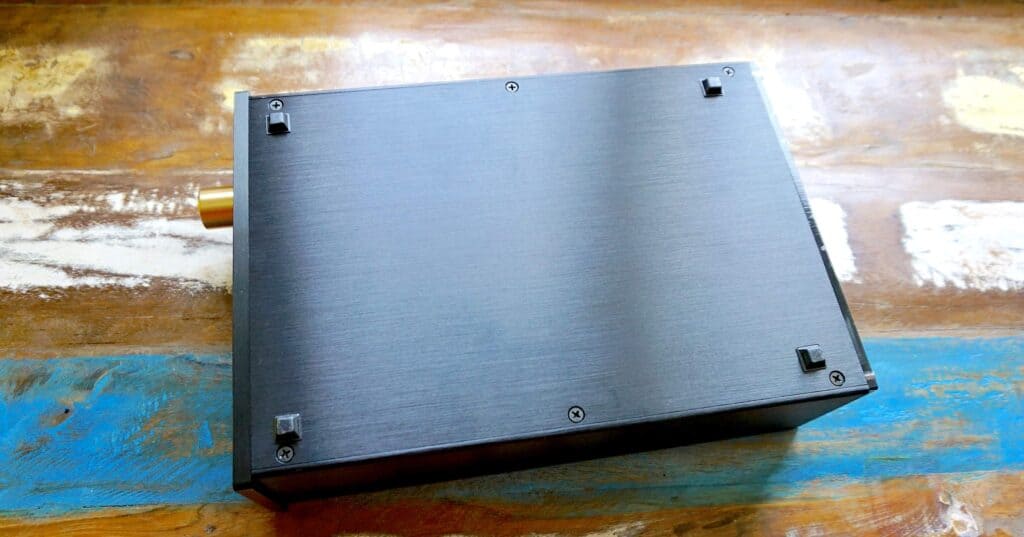
This is what you do. Hook everything up, switch on, play a familiar piece of music, set the load control at a minimum level. Let’s say the one o’clock position. Then? Listen. Listen to your favourite music. How does it sound to you? Take your time. Live with it for a little while.
Does it sound a little muffled maybe? Possible a bit dull? No real detail coming through? OK. That tells you that you need to increase the ‘volume’, as it were, you need to increase the rotary setting. So move it to the two o’clock position.

Again, listen, take your time. There’s no rush. Live with what you are hearing for a while. Still dull and lifeless? Up the volume to the three o’clock position. Listen again. But. But if the sound doesn’t sound dull. If, instead, it sounds bright or hard or metallic or harsh in any way then you’ve gone too far the other way. So dial it back a touch. And I mean a touch. Hardly move it at all. Then listen. Still too harsh? Dial back a little more and then keep going until that harsh sound slowly disappears. The detail, the midrange insight, the focused bass, all of that will slowly slot into a sweet spot. That is when this phono amplifier will be perfectly set up for your ears.
Not mine. Not the guy next door. Yours.
The rotary loading knob on the Akutrak runs from 1 to 11 (in true Spinal Tap form). So in my case? I began at 5. That was too bright so I dropped to 4. Don’t forget, you will be moving the gain of your main amp to compensate for the phono amp changes so expect that.
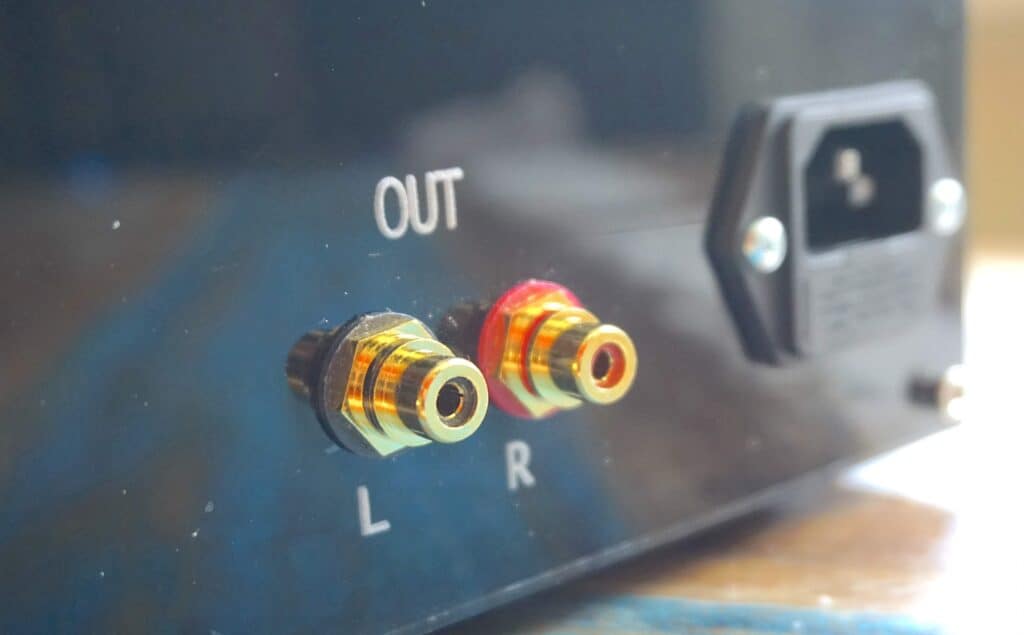
Anyway, 4 was a lot better. Up to 4.5 was a tad edgy so I dropped back to 4. Then I tried 3 and that was was fine for vocals but the backing music was a little dull so I upped the levels to 3.5 and that sounded pretty darned good. I then hovered between 3.25 and 3.75 until I settled on 3.5. That was my level but look, after a while, a day? A week? A month? I might tweak a little more to fine tune and hit that perfect level. But the load control allows that fine tuning. You just don’t get that with DIP switches or pre-set toggle switch settings.
SOUND QUALITY
I began the test with a 12” single as the sound source. Specifically? The B-side to the Japan single, Visions of China and the track Swing. A mid-tempo outing with plenty of percussion, synths, bass guitar plus saxophone.

In sound terms? Impressive. Very impressive. OK, the Akutrak might not have had quite the finesse and elegance of the PS3 but I think we’re partly talking more about the difference between solid state and valve amplification here and, possibly more significantly, the price of the PS3 (£2,750) but in sheer basic design terms? The Akutrak provided a beautifully designed and organised soundstage. There was so much space in between instruments that enables the ear to hear a heap of detail.
Even so, some of the synth lines were incredibly articulate. The sheer amount of information coming from this phono amplifier was striking. I thought the David Sylvian lead vocal was wonderfully textured with a grain around his vocal chords that added emotion. The synths had a rich complexity, bass guitar bended and squirmed all over the place, percussion was clean and that bass? Well that bass really did score over the Icon Audio phono amplifier been more imposing and firmer.
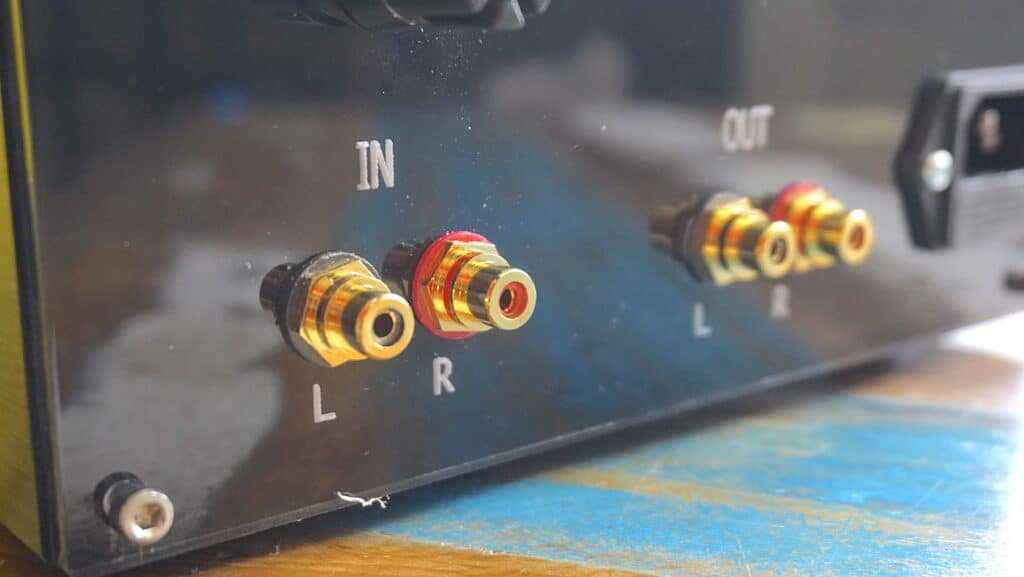
The basic neutrality and balanced performance from the Akutrak continued to Frank Sinatra and the sublime song, Angel Eyes from his melancholic LP, Only the Lonely. In this song, Sinatra bleeds all over the studio floor with a piercing pain and drags at the listener’s heart.

Here also, Sinatra sang from a place pushed back into 3D space around the stereo image but slightly elevated above that orchestra. His delivery was clean, open and – once more – sounded particularly articulate standing in a halo of echo (reverb hadn’t yet been invented, echo as everything back then).
As for the orchestra? The multitude of instruments? All of those sonic elements and the subtle presentation I’m supposed to tell you about? No idea. I have no idea. Why? Because the orchestra was too busy backing this one man, tearing his heart out because he’s lost his woman and he’s drinking himself into the ground because of it. It’s not the orchestra that grabs your attention, it’s tough to take your ears of these three minutes of grief. That’s how good the Akutrak is. Technical information? Forget that. Emotionally, the Akutrak beats you up and leaves you, sobbing on the floor, a sorry ball of cotton and polyester.
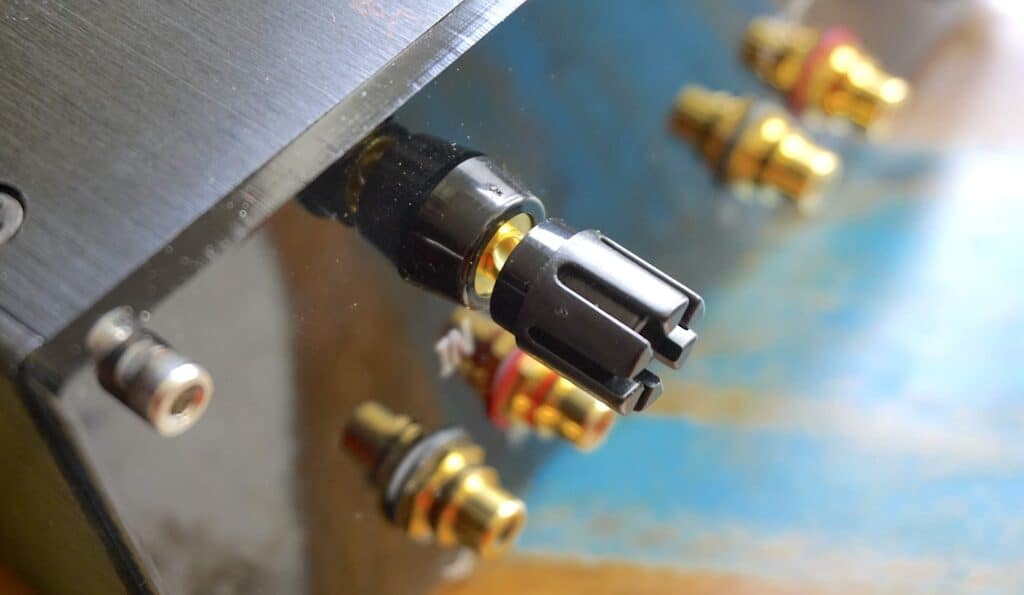
OK, before I get to the Conclusion, I need a double Jack Daniels. Hold the water.
CONCLUSION
I kept hitting my head against the word ‘accuracy’. The Akutrak kept doing that during this test. It performed properly, it kept the music together and, above all, offered an exemplary tonal accuracy. That means, whatever was happening in those speakers? The music sounded real. It sounded believable. Records were not a jumble of lyrics and effects, they became a narrative and I was hooked.
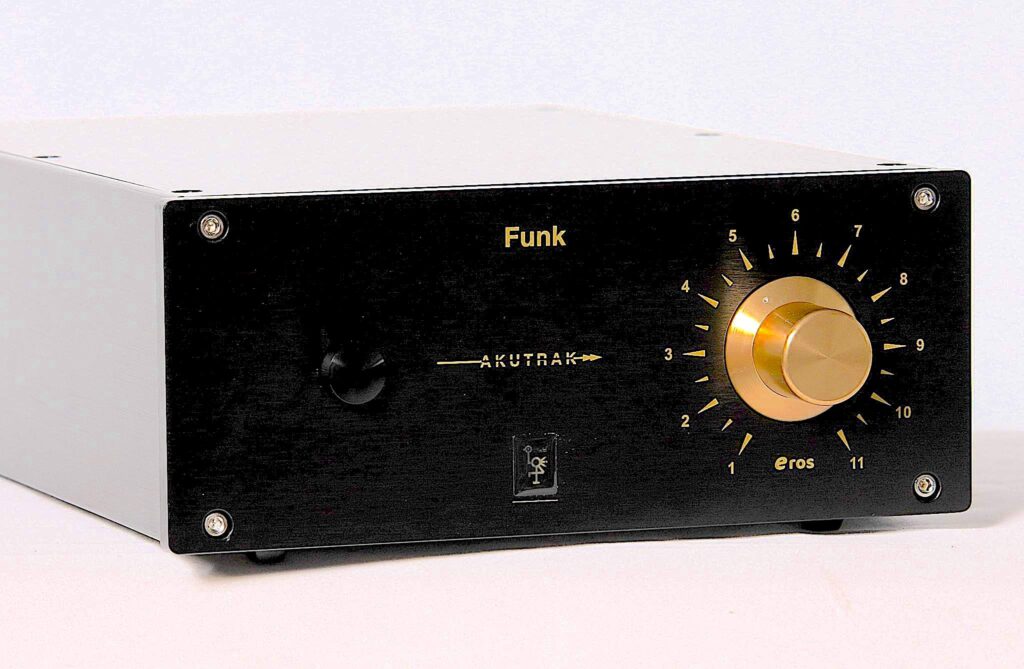
If I was greedy? If I could have my own wish regarding the design of the Akutrak? I wish this product arrived separated into two boxes to lower the noise floor still further, to up the detail level still further and to trigger the story telling aspect of the Akutrak to new heights but that’s not to be. At least not yet. But that’s me being selfish which isn’t fair to the amplifier we have in front of us here.
As it stands, this is a mightily impressive phono amplifier that offers focus and realism in treble and midrange terms with a big bottom end to provide plenty of bass punch and a sense of precision that will have you captivated.
THE FUNK FIRM AKUTRAK PHONO AMPLIFIER
Price: £1,800
Website: thefunkfirm.co.uk
GOOD: spacious soundstage, midrange accuracy, big bass, emotive delivery
BAD: nothing
RATING: 8



